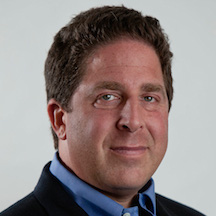
The way the Common Core has been implemented undermines the value that could come from robust educational standards.
Honest advocates have long conceded that new curriculum standards do not necessarily mean an actual change in educational practices or outcomes.
Writing about five years ago, two ardent champions of the Common Core, Chester Finn, Jr., and Mike Petrilli of the Thomas B. Fordham Institute, explained that “standards often end up like wallpaper. They sit there on a state website, available for download, but mostly they’re ignored.” In other words, one might well regard standards as one regards a corporate mission statement, something that often touts platitudes – for example, a commitment to being a great place to work – even though those pleasing words may bear little resemblance to reality.
When standards do have real power, their power lies in their ability to change what is tested, which in turn will change how curricula and textbooks are written, how teachers teach, and how students learn. This is why advocates are so impassioned and why critics are justified in fretting about the implications of the Common Core. When coupled with tests, accountability systems, and teacher evaluations, standards can morph into the invisible but omnipresent foundation of American education.
Unified standards and tests do have much to recommend them, at least in theory. They can make it much easier to compare the performance of schools, students, and educators and to discern the effects of different instructional interventions or training approaches. Common standards allow the people who create learning materials and provide professional training to design with consistent outcomes in mind. Standards also can make it easier for teacher-preparation providers, charter schools, and digital providers to operate in multiple states and compete on quality. They can also relieve burdens on families moving across state lines by ensuring that students receive more consistent instruction regardless of location.
Standardized measures have been used outside of education with great success. For example, it’s not necessarily “better” to require all plumbing systems to use pipes that measure 5/8 inches rather than 9/16 inches. But having standardized gauges and sizes means that all pipe makers will supply uniform pipes and that all plumbers will have the tools they need to repair them. Likewise, common standards for computer code and cell-phone signals have benefited those industries, which probably helps explain why Bill Gates and other business leaders with technology backgrounds have been especially supportive of the Common Core.
The benefits of common standards in education, however, depend mightily on how they are implemented. Unfortunately the push for the Common Core has undermined standards’ theoretical promise in profound and debilitating ways.
First, the Common Core is neither necessary nor sufficient for fixing the problem it was designed to solve. One of the key rationales for the Common Core was concern that states had essentially gamed and manipulated testing under No Child Left Behind (NCLB). But the Common Core wasn’t needed to solve that problem; a more modest solution was already available. Every state has long participated in the National Assessment of Educational Progress (NAEP), which tests students in reading and math in grades four, eight, and twelve under carefully controlled conditions and provides an extremely reliable method for comparing performance. In fact, a decade ago, NAEP results were already being used to flag states that appeared to be gaming their NCLB tests. Common Core advocates, however, argued that a reliance on NAEP was a poor, even makeshift alternative to the Common Core.
But truly solving the “gaming” problem would have required the Common Core tests to replicate NAEP’s careful protocols. Recognizing, however, that states might not sign onto Common Core if the terms were too stringent or coercion too transparent, champions were remarkably casual about requirements for policing test conditions, accepting mandatory passing scores, and such. Ironically, they failed to build in the very kind of controls that would be needed to prevent states from manipulating outcomes. As a result, states can administer the Common Core-aligned tests much later in the school year than is recommended (thus inflating measures of student learning); they can ignore guidelines on testing conditions; and they can set their own proficiency scores. The only so-called safeguard against gaming is the hope that state officials will be inclined to do the right thing — precisely what it was before the Common Core.
Second, many states and school districts are poorly implementing the standards. The decision to convince dozens of states quietly but swiftly to adopt the Common Core, especially through inducements attached to the Obama Administration’s Race to the Top program and NCLB “waivers,” ensured that many did so but with little commitment to taking them seriously. As a result, many Common Core states are not really all that invested in the Common Core. This nearly ensures states will go through the motions when implementing the standards, especially given the rushed, impractical timeline dictated by the spending requirements in federal law and the arbitrary wishes of the Obama administration. States were driven to commit to implementing new tests, technology, and materials at a fast pace that made little practical sense.
Third, widespread adoption of the Common Core has caused significant collateral damage to school improvement. The Obama Administration’s insistence that the new tests be used to evaluate teachers and schools starting in 2015 means that new tests of uncertain quality will form the backbone of brand-new evaluation systems that will dictate high-stakes decisions about teachers’ job security.
An added “gem” is that Common Core advocates excitedly announced that the new tests will be harder to pass, giving even open-minded teachers reason to fear that the combination of new tests, stricter scoring, and new high-stakes evaluations was designed to put them in the crosshairs. Unfortunately, it’s hard to envision a strategy more likely to sabotage support for both the tests and teacher evaluation.
Finally, the Common Core resembles a back-door way for the federal government to exert tremendous influence over education. NCLB prohibits federal departments or agencies from mandating, directing, or controlling “a State, local educational agency, or school’s specific instructional content, academic achievement standards and assessments, curriculum, or program of instruction.” But that law proved to be a frail safeguard. U.S. Secretary of Education Arne Duncan funded new testing consortia in the hope, he said, that their tests would drive instruction and that they would work on “developing curriculum frameworks” and “instructional modules.”
Coupled with the Obama Administration’s Race to the Top program, disregard for the constraints negotiated into NCLB, expansive and troubling use of NCLB waivers, aggressive efforts to dictate school discipline, and much else, we have to question how much restraint federal officials will show going forward. Common Core advocates have yet to create a strategy to update the standards or vet materials, prompting quiet conversations among some proponents (including those at the U.S. Department of Education) about whether it wouldn’t make sense for the federal government to fill the void. At this point, the Common Core appears to offer an open invitation to more federal involvement in schooling.
For better or worse, the Common Core debate really should not be about the abstract merits of “higher standards” (which may or may not describe the Common Core standards). It really should be about the desirability of this particular standard-setting effort and how it has been implemented. The way the Common Core has been carried out has more than justified serious questions about its desirability and viability.
This essay is part of a seven-part series, The Debate Over the Common Core State Standards.




